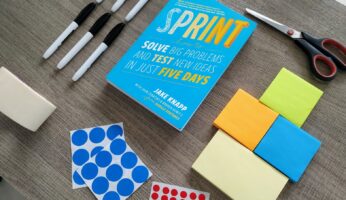
3 UX Hacks for Small Businesses to Succeed Digitally
Delighting your customers online by improving user experience will help you to retain customers and appeal to the younger generation of digital natives.
Running a profitable online business can be difficult especially as a small business or a startup. In order for your business to be successful, you need to pay attention to the User Experience (UX) of your website or mobile app. Here are 3 UX Hacks for Small Businesses you can use to improve the usability of your website and succeed in the modern hyper-competitive digital world.

1. Conduct Card Sorting Exercises To Determine Ideal Website Structure
Card sorting is a cost-effective way to evaluate and design the architecture of your website. You can do card sorting online or through physical workshops, where participants arrange cards of information based on their own experiences. This helps to give insight into customers’ mental models; what and how they think. You may probe further to understand the why.
Benefits of card sorting:
- Tailoring the structure of your website to suit user need
- Navigation structure for your users
- Label categories and genres (vital for content-heavy websites)
How to conduct a card sorting exercise:
- Conduct user research and perform a content audit — understand your audience and content breakdown in order to empathise with their choices
- Based on the list of content topics from your content audit, write down all the words and phrases relevant to each category on a post-it note or virtual cards if you’re using card sorting software
- Facilitate the workshop by explaining the context of the exercise (you probably want help to find out what categories of information go where on your site) and ask your workshop participants to proceed without too much hand holding as it might cause a biased result.
- Review and analyse the data collected to find the best content structure for your website.
Online Card Sorting Tools:
https://www.optimalworkshop.com/optimalsort/
Main Features:
- Remote card sorting
- Analysis of data
- Open / Close card sorting types

2. Carry Out Design Thinking Workshops To Think Of New Solutions
Design Thinking can be simply thought of as a non-linear, open and iterative process that can be used to challenge assumptions and test concepts before building an actual product or service. It can be used as a method to build businesses based on actual needs of the target group from the ground up through the 5-step process of empathizing with the target audience, defining the problem(s), ideation of different solutions, prototyping and testing the business case before deployment.
In UX, Design Thinking is vital to tackle ill-defined or unknown problems and allows teams to “think out of the box”. With Design System Thinking, teams have the freedom to generate novel solutions to actual problems that serve a target audience.
How to apply the Design Thinking process for your business:
- Empathize with your users’ problems: Getting a firm understanding of your target audience requires you to set aside your own assumptions and biases about the market and gain insight by carrying out focus group discussions or one-on-one interviews with a sample size of your target audience.
- Define the problem(s) you are trying to solve: Building a business around a market that does not require your solution is a waste of time. By defining the problem, you can avoid the pitfalls of building a business without a solid business case. This is where you can create problem statements and personas to design the solution around the problem you are trying to solve.
- Ideate with divergence: Generate new ideas with activities like brainstorming without limiting imagination at this stage. Keep building on one another’s ideas and look for alternative ways to solve the problem. This stage should be a “judgement free” zone; no ideas are bad ideas.
- Prototype and experiment with solutions: This will be the stage where you take the ideas that your team generated and find the best fit for your problem. Your team should be making watered-down, low cost mockups that you can test at this stage, leaving the details for later. Ensure that the prototype works before testing.
- Testing and refining: Although this is the final stage of the process, designing a solution for a business case may take a few more rounds of going back to the drawing board and using the results your team has achieved to build one or two more related solutions. There is no hard and fast rule, but business requirements may impose constraints on the scope of the exercise.
Resources for Design Thinking:
https://dschool.stanford.edu/resources
https://www.collectivecampus.io/resources/stop-talking-start-making-ebook
You can find free resources through these websites that go into Design Thinking in greater detail via the links above.

3. Test Small-scale Improvements Or Product Releases Using A/B Testing
Increase the revenue to your online business by A/B testing or split testing your website. In order to know which landing pages perform better, you need to run tests to figure out which designs appeal more to your target audience. A small change can have a huge impact on your online sales, and A/B testing is one of the ways you can experiment with different designs in a low-stakes environment.
How to do A/B testing for your digital business:
- Identify the metrics you want to improve through A/B testing; do you want improved clickthrough rates? Or are your customers abandoning purchases halfway through browning? These are things you can identify as pain points for improvement.
- Create 2 or more distinct variations of whichever component you want to test, such as headlines, copy, CTA (Call-To-Action) buttons, images, audio and audio
- Use A/B testing software such as CrazyEgg to run tests for landing pages and other areas of your website. Different A/B testing software will have different capabilities so it will be important to pick the right one.
- Accumulate and analyze data after the tests have been conducted for some time to see how to improve on the metrics that you’re testing for.
A/B testing tools:
https://analytics.google.com/analytics/web/provision/#/provision
You can find some of the A/B testing tools in via the links above.
What Can You Do To Digitise?
In order to keep up with digital trends, it is always important to focus on user needs first before building solutions to accommodate those needs. Through card sorting, Design Thinking and A/B testing, you can keep close to your customers and be able to anticipate trends as they happen. If you would like to know more about how InterX Labs can digitise your business effectively, you can approach us at sales@interx-labs.com










